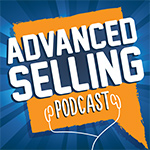This is the third in a series of seven articles outlining the need for NEW RULES in your selling efforts. In this article, we’ll look at the Dynamic of Decisions.
Remember the good ole’ days when you were trained to ask the customer, “Who makes the buying decision on this?” (Or, some version of that.)
Well, that implied something very obvious – but wrong.
That implied that it was THEM (or someone at their company) making the decision, not you.
We also used elaborate metaphors like the Fox, the Champion, the Sponsor, the Hen (OK, maybe not the hen).
Then we would pull out the org chart and have them tell us who would be involved in the decision. And we’d get lied to. (You forgot that part, didn’t you?)
This process must change.
Today, you must alter the “Dynamic of Decision.” Changing this dynamic enables you to reap enormous rewards and stop wasting time with non-qualified prospects. Read more

 Are you staying up late every night mesmerized by the Olympics?
Are you staying up late every night mesmerized by the Olympics?